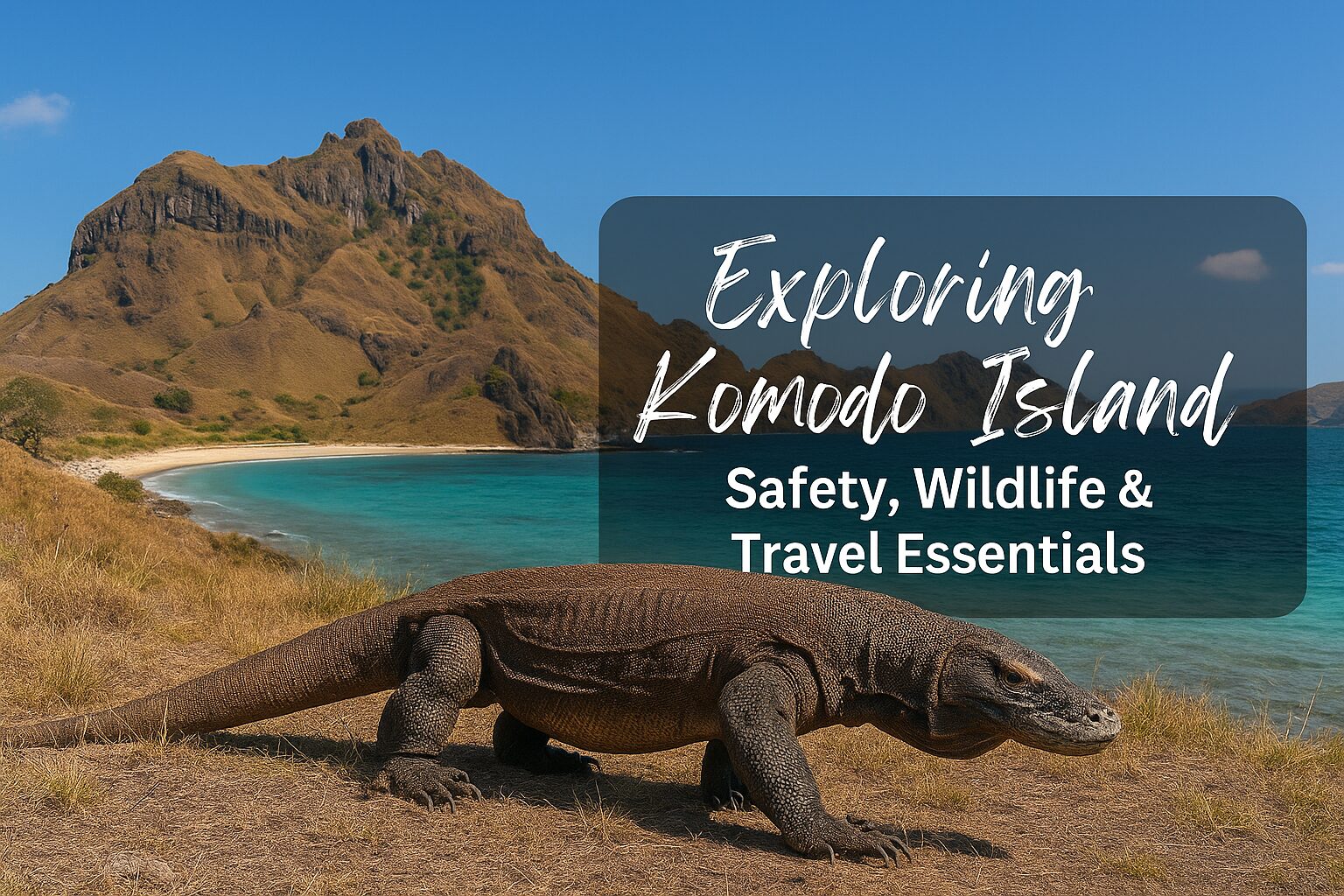Tucked within the Indonesian archipelago, Komodo Island is an exotic escape known for its rugged terrain, pristine waters, and its most famous inhabitant—the Komodo dragon. These ancient reptiles, also called Varanus komodoensis, captivate adventurers from around the world.
Whether you’re planning a trip to witness this giant lizard dragon or simply curious about their behaviors, dangers, and the travel logistics involved, this guide covers everything from island safety to Komodo dragon petting myths.
Where is Komodo Island Located?
The location of Komodo Island is between the islands of Flores and Sumbawa in Indonesia. It’s a part of the Komodo National Park, a UNESCO World Heritage Site that also includes Rinca and Padar islands.
This remote destination is often called Komodo Island Komodo by travelers, combining the island’s name with its most iconic species.
Meet the Komodo Dragon – King of Reptiles
The Komodo dragon, the largest reptile Komodo in the world, is both a marvel and a menace. With a long muscular tail, sharp claws, and serrated teeth, these huge lizards are apex predators.
Komodo Dragon Facts:
- Scientific name: Varanus komodoensis
- Average lifespan: 20–30 years
- Adult Komodo dragon size: Up to 10 feet long
- Weight: Over 150 kg in some cases
- Known locally and fictionally as Kemono dragon or Kyoto dragon
These reptiles have sparked fascination and fear, not only because of their size but also due to their venomous bite, which can cause rapid blood loss and infection.
How Dangerous Are Komodo Dragons?
So, do Komodo dragons attack people? While attacks are rare, they have occurred, particularly when humans approach too closely or interfere with feeding. Their saliva contains venom that prevents blood clotting, and they can track wounded prey for miles.
Common Safety Concerns:
- Komodo dragon bites human reports exist
- Yes, Komodo dragons eating humans has happened in isolated incidents
- Komodo dragon attack human behavior is usually provoked
- The species is considered aggressive, especially when threatened or hungry
For your safety, never pet a Komodo dragon, and forget the idea of Komodo dragon plush toy dreams becoming real-life pets.
Can Komodo Dragons Be Pets?
Absolutely not. Though the idea of a pet Komodo dragon or a miniature Komodo dragon sounds fun, it’s both dangerous and illegal. These creatures are wild animals with unpredictable behavior.
Can you keep a Komodo dragon as a pet?
No—neither legally nor safely.
Even though people might search for Komodo dragon as pet or wonder can I have a Komodo dragon as a pet, it’s essential to respect their wild nature. Stick to Komodo dragon art, Komodo dragon shirt, or a Komodo dragon Halloween costume for a safe experience.
What Do Komodo Dragons Eat?
What Komodo dragons eat ranges from birds and rodents to deer and even water buffalo. They are carnivores and excellent ambush hunters.
They rely on stealth, sudden bursts of speed, and a venom-laced bite to kill their prey. They are also known for Komodo dragon cannibalism, especially when food is scarce.
FAQs:
- Do people eat Komodo dragons? Rarely and illegally, as they are a protected species
- How do Komodo dragons hunt? They ambush, bite, and track prey using scent
- Why are Komodo dragons so mean? They’re not mean—just apex predators following instincts
Top Things to Do on Komodo Island
You might arrive for the dragons but stay for the stunning natural beauty. There’s much more to this island than its massive reptiles.
Top Experiences:
- Guided Komodo hunting tours (with cameras!)
- Trekking through dragon territory with a ranger
- Exploring coral reefs by snorkeling or diving
- Hikes up Padar Island for panoramic views
- Observing Komodo dragon behavior from safe viewing points
Wondering what to do in Komodo beyond the wildlife? There are many scenic viewpoints and nearby islands to explore.
Komodo Island Safety Tips
Your trip can be thrilling and safe—if you follow a few basic rules.
Safety Guidelines:
- Always explore with a certified guide
- Maintain distance from dragons (5+ meters recommended)
- Avoid bringing raw meat or food near them
- Wear proper trekking gear and closed shoes
- Stay hydrated and aware of the heat
- Learn about Komodo island deaths and what went wrong to avoid repeating it
Respecting the natural boundaries is key to enjoying this unique place responsibly.
Where to Stay in Komodo Island
Most visitors stay in Labuan Bajo, the port town that serves as the gateway to the park. From there, boat tours bring you to Komodo Island and nearby destinations.Accommodation Tips:
- Komodo island accommodation options are limited—book early
- Luxury and eco-resorts are available nearby
- You can stay in Komodo National Park, but permits are needed
Searching where to stay in Komodo Island? Try a beachfront bungalow in Flores or a liveaboard boat for a true adventure.
Strange but Popular Questions
Weird but commonly asked queries from the web:
- Komodo dragon vore – A niche internet fantasy, not reality
- Anthro Komodo dragon – Popular in fan art, not science
- Human Komodo dragon size comparison – On average, the dragon is bigger than most adult humans!
- Cute Komodo dragon – Babies, or young Komodo dragons, are cuter and climb trees to survive
Final Thoughts
Komodo Island is a rare blend of prehistoric wonder and natural beauty. With its volcanic terrain, pristine waters, and the mythical-like presence of the Comodo dragon, it truly feels like another world. Whether you’re here to hike, dive, or simply marvel at a Komodo dragon photo up close—do so with respect, caution, and awe.
For more destination insights and wildlife stories, stay connected with The Inspiring Insight.




